How to Tackle Without a Foul in Football?

Introduction
Defending in football requires skill, precision, and knowledge of the rules. Poor tackling technique not only risks giving away free kicks but can also result in yellow or red cards that leave your team at a disadvantage. Many players struggle with executing clean tackles, often resulting in unnecessary fouls that can change the course of a match. Learning how to tackle properly is essential for defenders and midfielders alike, as it can be the difference between winning and losing possession at crucial moments.
Understanding Football Tackles

A tackle in football is a defensive action where a player attempts to take the ball away from an opponent who is in possession. While tackling is a fundamental skill, it's also one of the most misunderstood aspects of the game.
What is a clean tackle in football? A clean tackle occurs when a player successfully wins the ball from an opponent without committing a foul. According to the laws of the game, a legal tackle must primarily contact the ball first, use reasonable force, and not endanger the opponent's safety.
The 17 rules of football include specific guidelines about tackling. Rule 12, which covers fouls and misconduct, states that a tackle that endangers an opponent's safety must be sanctioned as serious foul play. Understanding these rules is the first step toward mastering clean tackling.
Types of Legal Tackles in Football
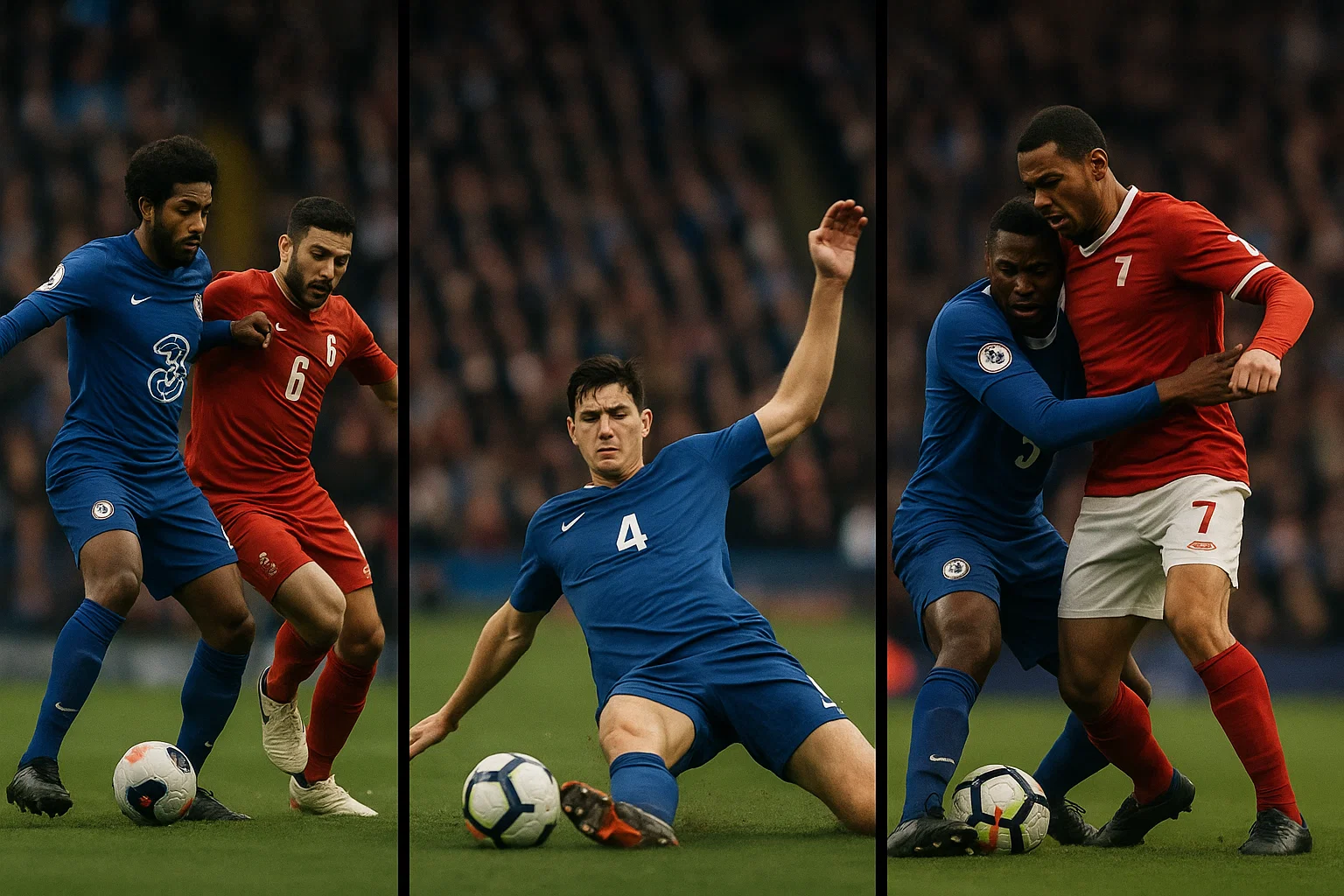
There are three main types of legal tackles in football:
- Standing tackle - Where the defender remains on their feet while challenging for the ball
- Slide tackle - Where the defender slides along the ground to reach the ball
- Block tackle - Where the defender uses their body to block the ball's path
Each type has its appropriate time and place in a match. Knowing when to use each technique is as important as knowing how to execute them properly.
The Standing Tackle: Technique and Execution

The standing tackle is the safest and most commonly used tackling technique in football. It allows defenders to maintain balance and position after winning possession.
How to correctly tackle in football using the standing technique:
- Adopt a side-on stance with knees slightly bent
- Keep your eye on the ball, not the player
- Time your movement to coincide with the opponent's touch
- Step forward with your leading foot
- Use the inside of your foot to make contact with the ball
- Keep your body between the opponent and the ball after winning possession
This technique is particularly effective when jockeying an opponent toward the sideline, limiting their options and increasing your chances of winning the ball cleanly.
Standing tackles are essential skills taught in youth football academies. At City Champions' football academy in Dubai, young players learn proper tackling techniques that set the foundation for their defensive abilities.
Perfecting the Slide Tackle
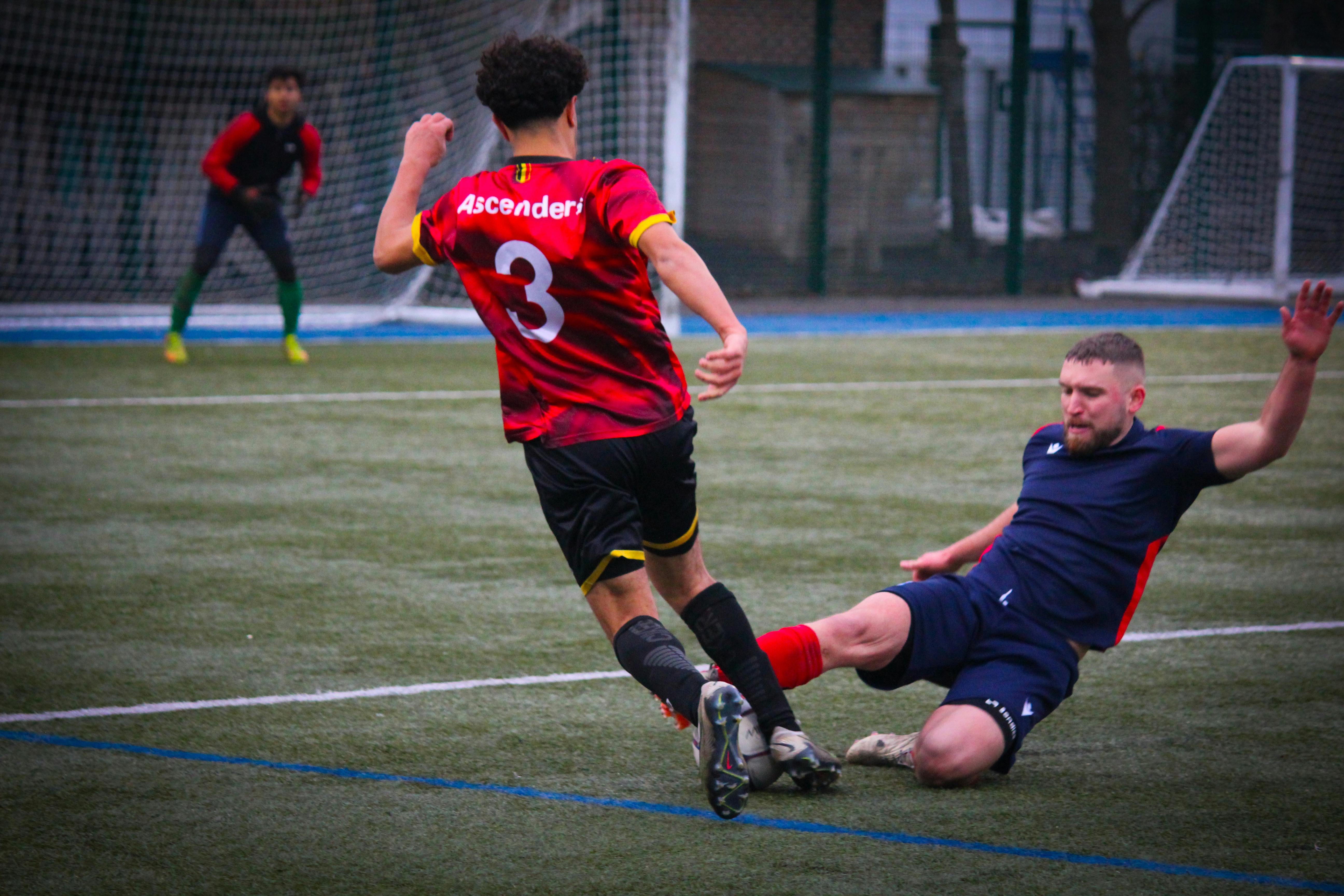
The slide tackle is one of the most spectacular defensive moves when executed correctly, but it also carries the highest risk of resulting in a foul.
What is the correct way of slide tackling in football (soccer)?
- Only attempt a slide tackle when absolutely necessary
- Approach from an angle, not directly head-on
- Time your slide to coincide with when the ball is away from the opponent's feet
- Lead with your strongest foot, keeping it slightly bent
- Make contact with the ball using the inside of your foot or your instep
- Tuck your trailing leg underneath to avoid contact with the opponent
- Keep your eyes on the ball throughout the entire motion
The key to a successful slide tackle is to ensure you win the ball cleanly without going through the opponent first. If there's any doubt about your ability to win the ball, it's better to stay on your feet and maintain your defensive position.
For young players looking to develop proper technique, football coaching for kids in Dubai provides specialized training focused on safe and effective tackling methods.
Block Tackles: When and How to Use Them
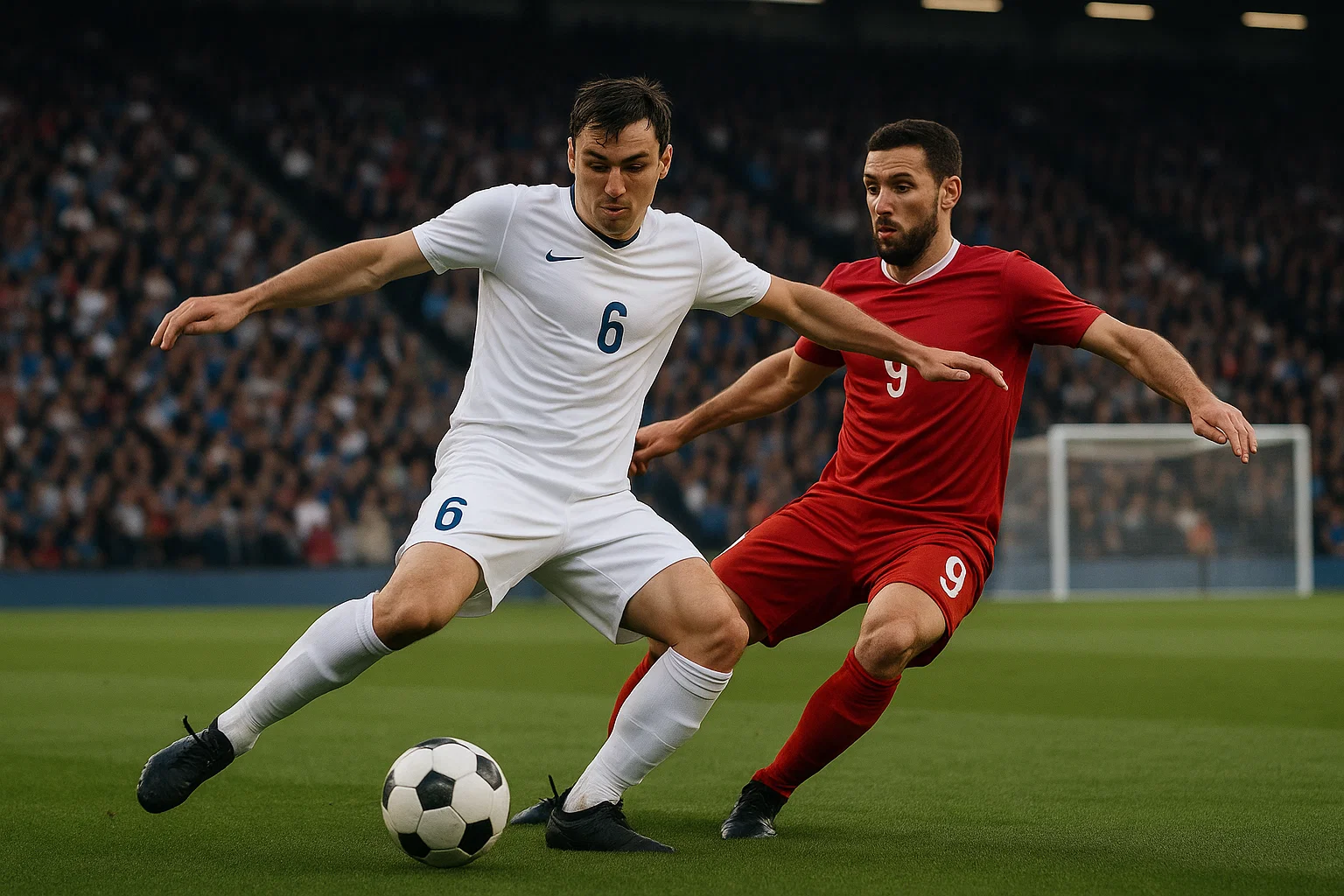
Block tackles are effective when an opponent is about to shoot or make a pass. This technique involves placing your body in the path of the ball to block its trajectory.
To execute a proper block tackle:
- Position yourself between the ball and the goal
- Stay on your feet with knees slightly bent
- Make yourself as big as possible by spreading your arms slightly
- Time your block to coincide with the opponent's strike
- Use the inside or outside of your foot to make contact with the ball
Block tackles are lower-risk options in dangerous areas of the pitch where a mistimed slide tackle could result in a penalty or a dangerous free kick.
Learning to become a leader on the football pitch involves mastering defensive skills like block tackling, which can inspire confidence in teammates during crucial defensive situations.
Common Tackling Mistakes That Lead to Fouls
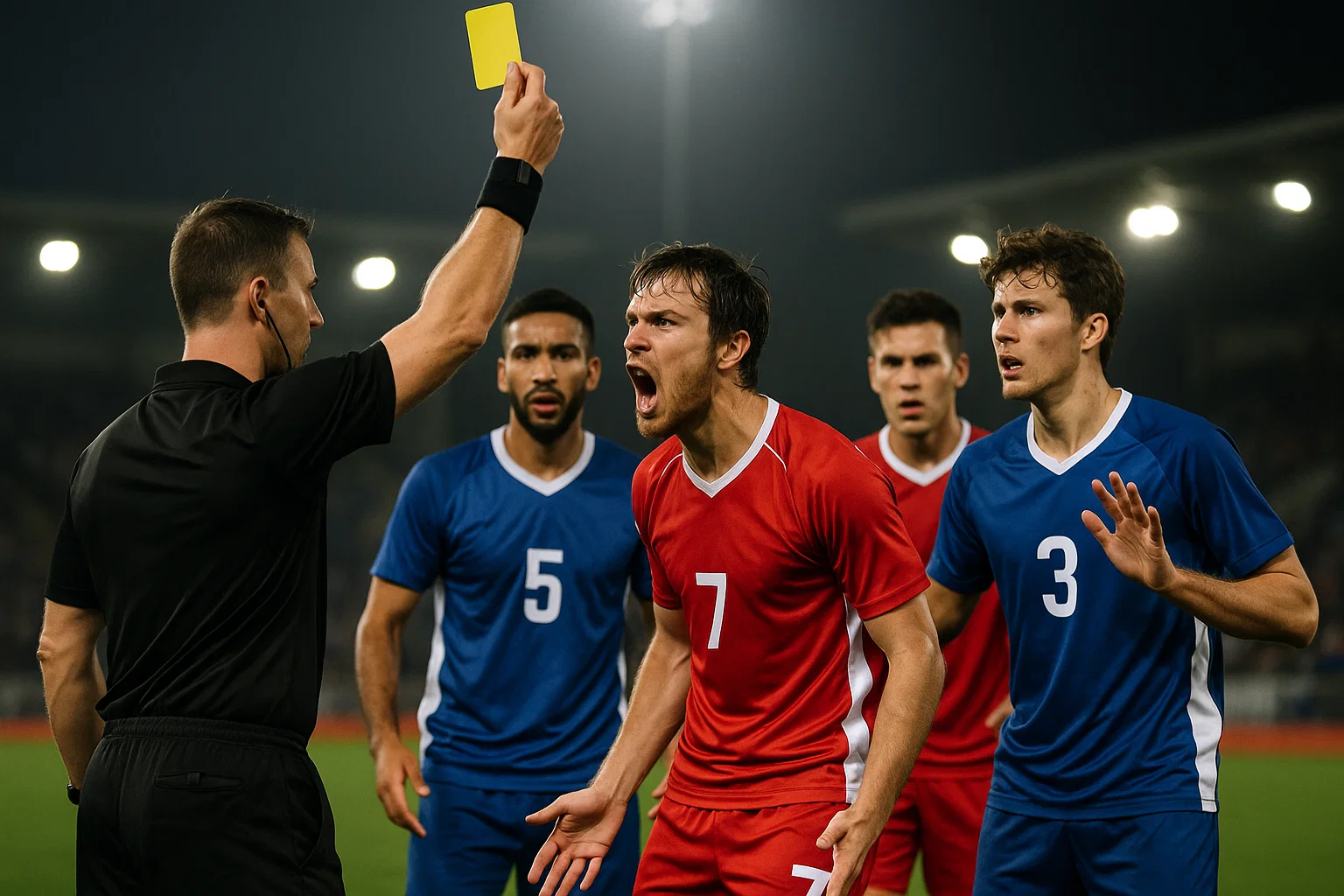
Understanding what constitutes a foul is essential for developing clean tackling technique. Here are the most common mistakes to avoid:
- Tackling from behind - Almost always results in a foul and often a yellow card in football
- Leading with studs up - Dangerous play that can result in a red card in football
- Two-footed tackles - Generally considered excessive force and serious foul play
- Using excessive force - Even if you win the ball, excessive force can still be penalized
- Making contact with the player before the ball - A clear foul under the laws of the game
Avoiding these mistakes requires practice, discipline, and a thorough understanding of the rules. Developing proper technique early is crucial, which is why the best age to join a football academy is between 5-7 years, when players can learn correct habits from the beginning.
Mental Aspects of Tackling
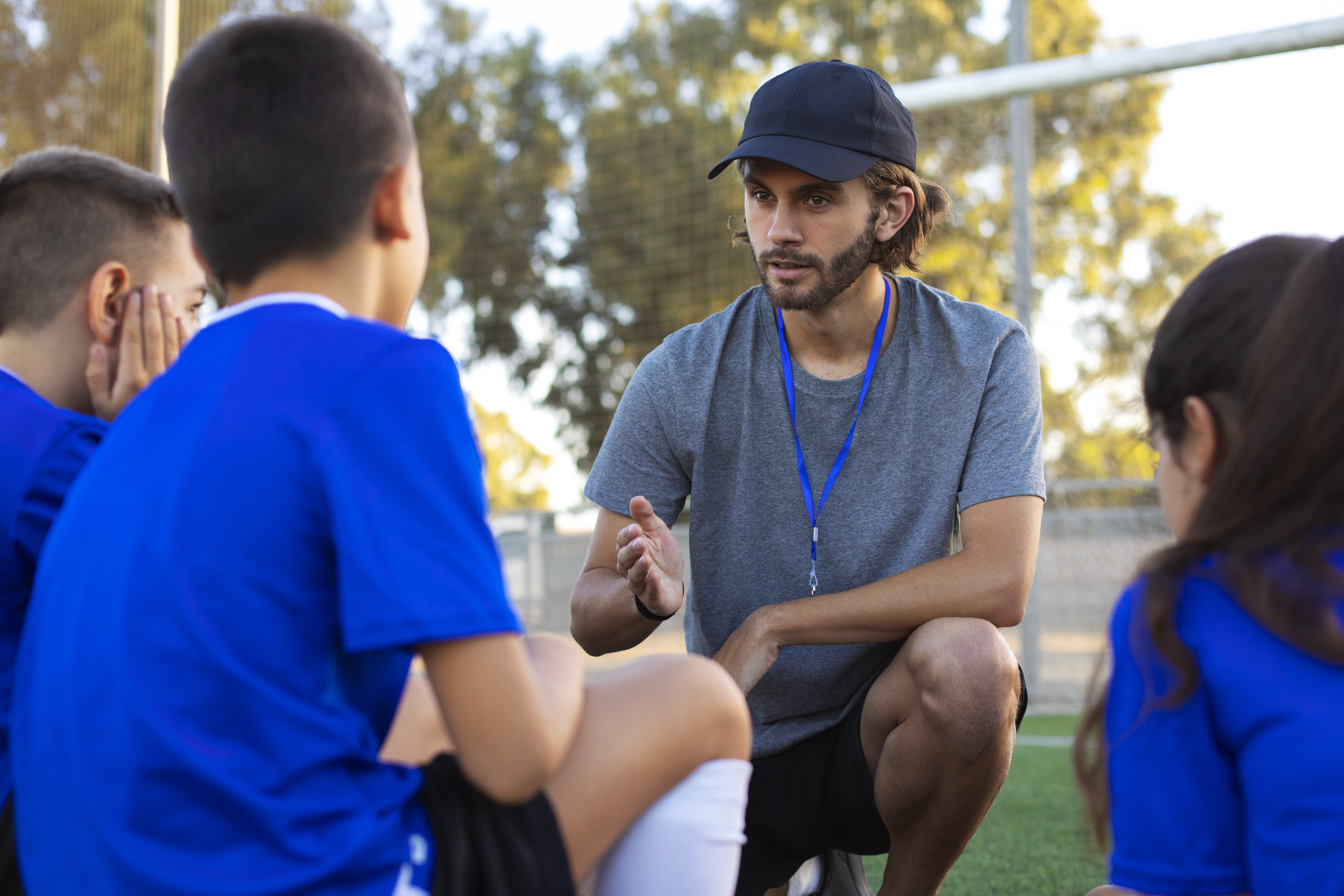
Successful tackling isn't just about physical technique—it's also about mental approach. Mental toughness in football plays a crucial role in defensive decision-making.
Key mental components of tackling include:
- Patience - Waiting for the right moment rather than diving in
- Composure - Staying calm under pressure, especially in the penalty area
- Reading the game - Anticipating the opponent's moves to position yourself effectively
- Decision-making - Knowing when to tackle and when to contain
- Concentration - Maintaining focus throughout the match
Players who excel at tackling, like Virgil van Dijk or N'Golo Kanté, demonstrate exceptional mental attributes that complement their technical skills. Their ability to read the game allows them to make interceptions and tackles with minimal risk.
Training Exercises to Improve Tackling Skills
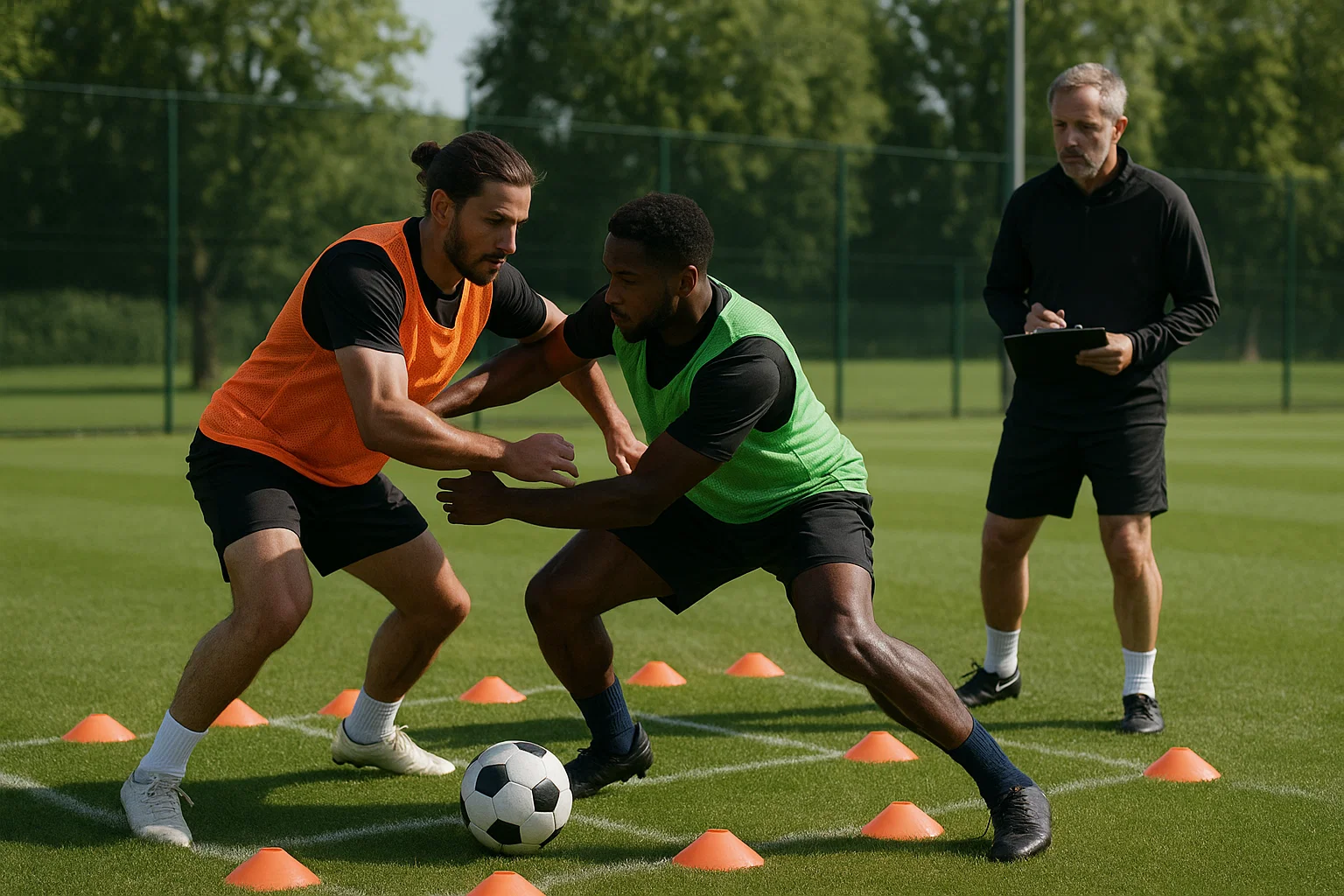
Developing clean tackling technique requires dedicated practice. Here are effective training exercises:
1v1 Defensive Drills
- Set up a small grid (10x10 meters)
- One player attacks, one defends
- The defender practices containing and timing tackles
- Switch roles after five attempts
Channel Defending
- Create a wide channel (5x15 meters)
- Attacker tries to dribble through the channel
- Defender works on forcing the attacker wide and executing standing tackles
- Emphasize staying on feet and body positioning
Slide Tackle Practice
- Use a stationary ball initially
- Practice the sliding motion on a wet surface or professional-grade turf
- Progress to a rolling ball
- Only then advance to opposed practice with very controlled speed
These football training session ideas can be incorporated into regular practice to develop tackling technique in a safe and progressive manner.
Position-Specific Tackling Techniques
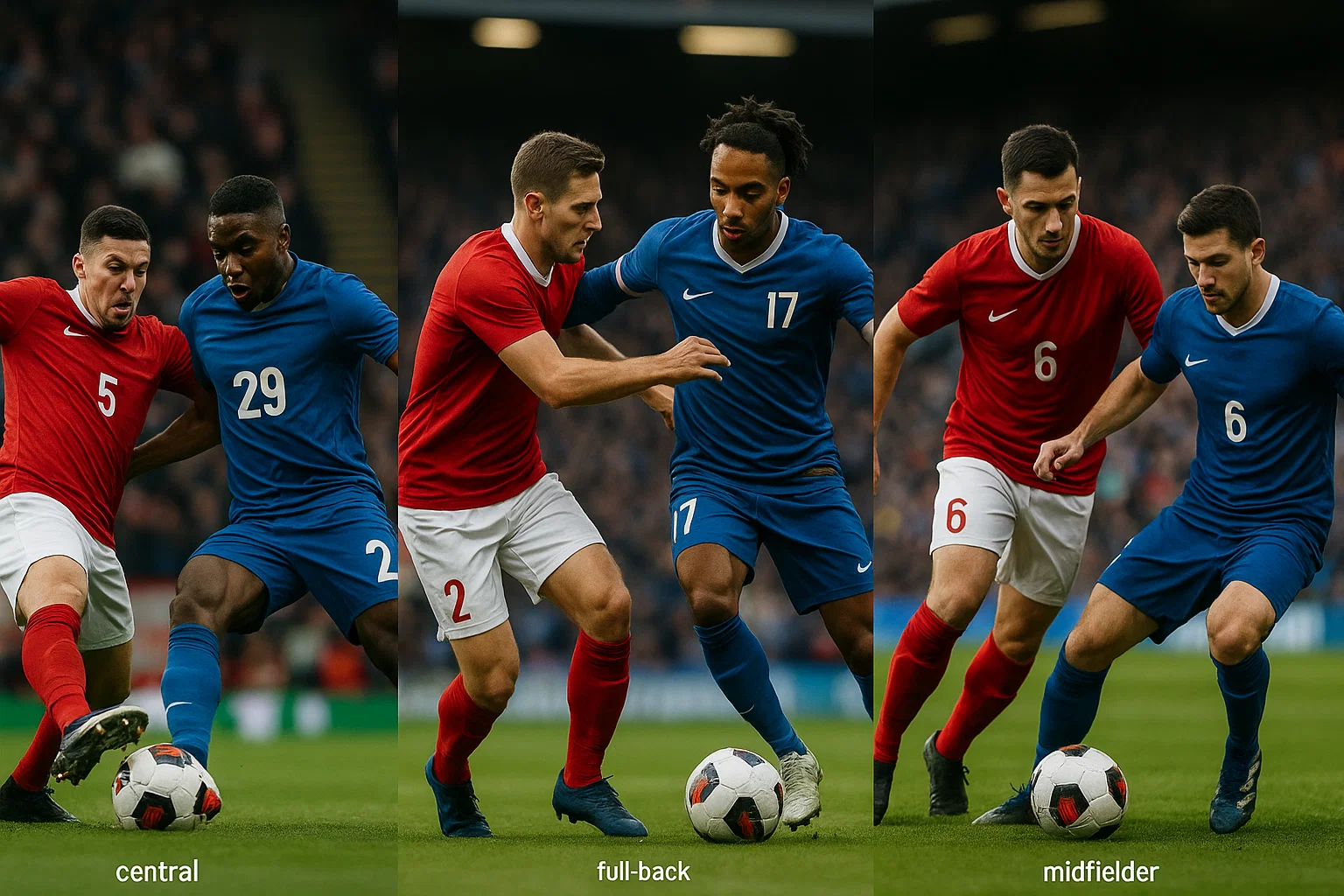
Different positions on the pitch require specialized tackling approaches:
Central Defenders:
- Emphasis on block tackles and interceptions
- Strong aerial challenges
- Timing is crucial when facing strikers with their back to goal
Full-Backs:
- Side-on stance to show wingers inside or outside
- Quick recovery tackles when beaten for pace
- Coordination with midfielders to create pressing traps
Midfielders:
- Focus on standing tackles to maintain position
- Screening and interception skills
- Quick transitions from defense to attack after winning possession
Forwards:
- Pressing techniques to force defenders into mistakes
- Counter-pressing immediately after losing possession
- Strategic fouls when necessary (though this should be used sparingly)
Understanding position-specific requirements helps players develop relevant tackling skills. For instance, wingers need different tackling approaches, as outlined in essential skills for wingers in football.
Recovery After a Failed Tackle
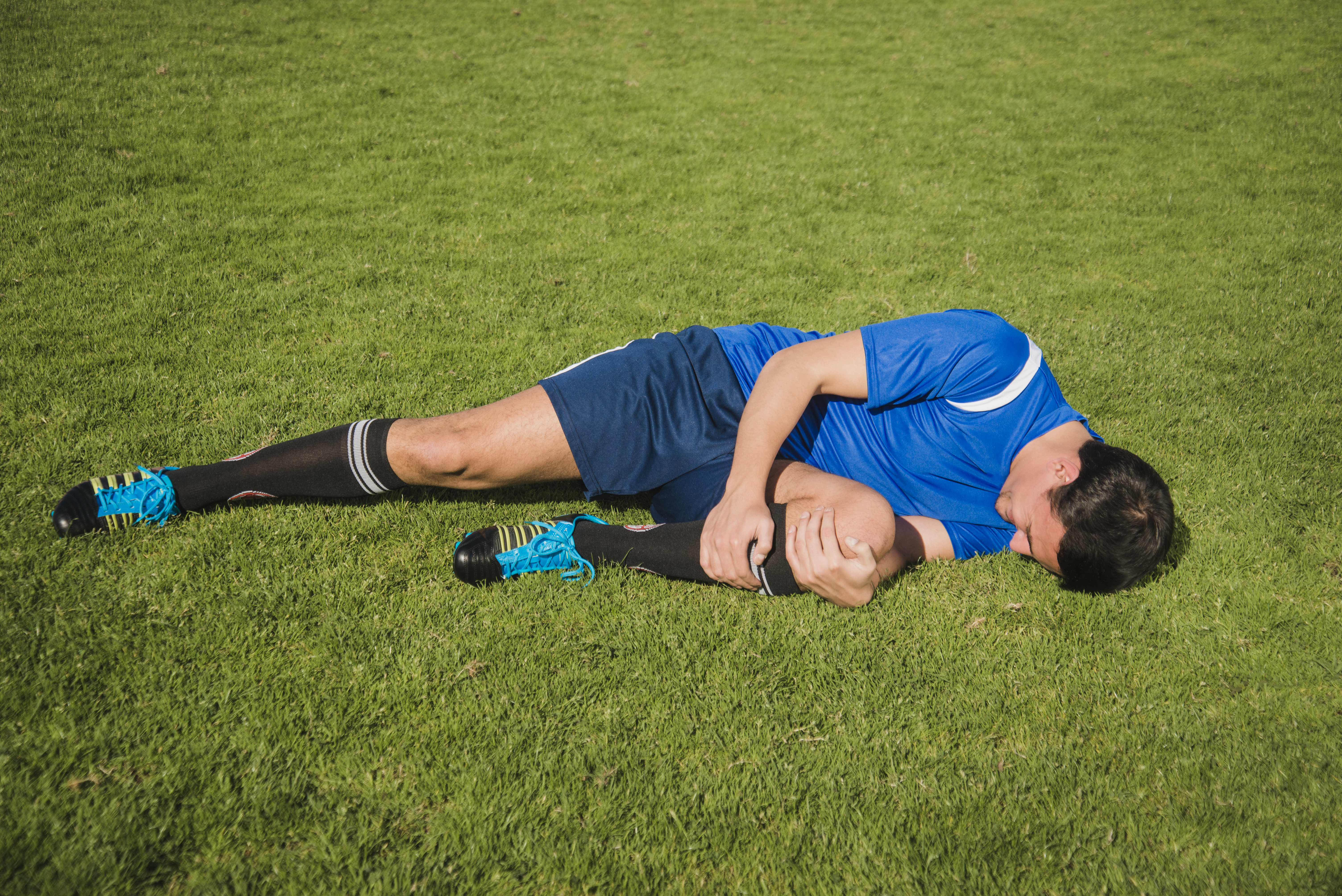
Even the best defenders miss tackles occasionally. How you react after a missed tackle can be the difference between conceding a goal or recovering the situation:
- Get back to your feet immediately
- Take the shortest route to recover position
- Apply immediate pressure if possible
- Communicate with teammates to provide cover
- Avoid committing a tactical foul unless absolutely necessary
Recovery speed and determination are essential attributes for defenders. Essential exercises for football players include agility drills that improve recovery capacity after missed tackles.
Adapting Tackling Techniques to Different Surfaces

Tackling technique must be adjusted based on the playing surface:
Natural Grass:
- Traditional sliding tackles are more effective
- Surface provides natural cushioning for sliding
- Tackle timing needs adjustment based on grass length and moisture
Artificial Turf:
- Increased friction can cause injuries during slides
- Standing tackles become more important
- Appropriate footwear is crucial
Wet Conditions:
- Tackles should account for reduced friction
- Sliding distance will increase
- Greater care needed to avoid momentum carrying you into the opponent
Players who train on the best football turf in Dubai learn to adjust their tackling techniques for artificial surfaces, which is increasingly important in modern football.
Conclusion
Mastering the art of tackling without fouling is a continuous learning process that combines technical skill, physical attributes, and mental sharpness. Clean tackling not only prevents unnecessary fouls but also increases your effectiveness as a defender and contributes to your team's success.
Remember these key principles:
- Focus on winning the ball cleanly
- Stay on your feet whenever possible
- Time your challenges carefully
- Understand the laws of the game thoroughly
- Practice different tackling techniques regularly
By applying these principles and consistently working on your tackling technique, you'll become a more valuable defender who can win possession without conceding free kicks or receiving cards.
For young players in Dubai looking to develop their defensive skills, City Champions' football camps offer specialized coaching that focuses on all aspects of the game, including proper tackling technique.
Frequently Asked Questions
1. Is it legal to tackle from behind in football?
Tackling from behind is generally considered dangerous play and is likely to be called as a foul. If there is no contact with the player and you clearly win the ball first, it may be legal, but this is extremely difficult to execute and not worth the risk of a card.
2. What's the difference between a fair challenge and a foul in football?
A fair challenge primarily involves contact with the ball first, uses reasonable force, and doesn't endanger the opponent. A foul occurs when a player makes contact with the opponent before the ball, uses excessive force, or challenges in a careless or reckless manner.
3. How can I improve my tackling timing?
Timing improves with practice and game experience. Focus on the ball rather than the player, wait for the opponent's touch to move slightly away from their body, and then make your move. Training exercises that focus on 1v1 defending are particularly effective.
4. Are two-footed tackles always illegal in football?
While not explicitly illegal, two-footed tackles are almost always penalized because they typically involve excessive force and endangering an opponent's safety. Modern referees interpret them as serious foul play, often resulting in a red card.
5. How do I know when to make a slide tackle versus a standing tackle?
Use slide tackles only as a last resort when the ball is out of reach for a standing tackle. If you're the last defender or in the penalty area, standing tackles are almost always preferable due to the lower risk of fouling.
6. Can I use my shoulder to push an opponent off the ball?
Yes, shoulder-to-shoulder challenges are legal in football as long as they're not excessive and you're genuinely challenging for the ball. The force must be proportionate and part of a legitimate attempt to win possession.
7. What should I do if I realize my tackle will be late?
If you realize you'll be late for a tackle, pull out of the challenge immediately. It's better to allow the opponent to progress than to commit a foul, especially in dangerous areas of the pitch or when you're already on a yellow card.
8. How important is upper body strength for tackling?
Upper body strength is valuable for maintaining balance and executing shoulder challenges, but technique is far more important than pure strength. Focus on core stability and balance rather than just building upper body strength.
9. How can young players practice safe tackling techniques?
Young players should start with unopposed drills focusing on technique, then progress to semi-opposed (controlled speed) exercises before attempting full-speed tackles. Tactics and techniques for children in football should always prioritize safety while building foundational skills.
10. Does playing on artificial turf change how I should tackle?
Yes, artificial turf creates more friction than natural grass, which can increase the risk of injuries during sliding tackles. On turf, focus more on standing tackles and be aware that sliding tackles will have less "slide" and more grip. Choose appropriate football boots for artificial grass to maintain proper traction.
Recent News
How to Improve Your Speed and Agility on the Field (Even If You're Not the Fastest Player)
link